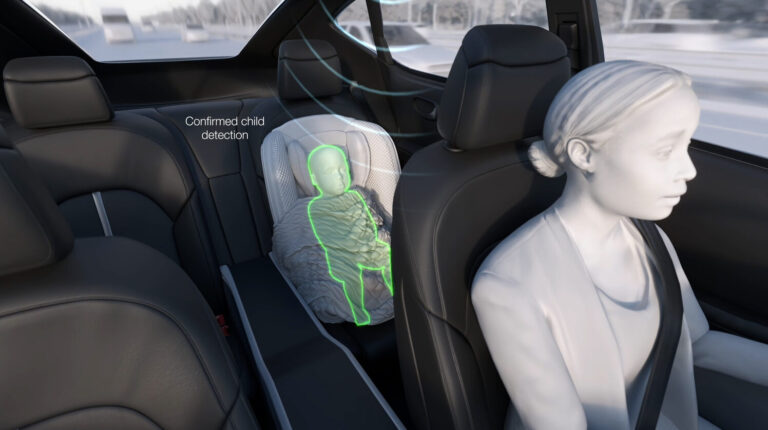Magna‘s comprehensive interior sensing systems – designed to protect occupants and enhance the driving experience – have been awarded or begun production for five OEM programs across North America, Europe and Asia over the past 18 months.
S&P Global forecasts a 3.5-times growth in interior sensor adoption from 2024 to 2032, driven by legislation and safety ratings supporting ADAS. Nearly 40 children die in hot cars every year in the USA, according to Kids and Car Safety, an organization that collects and analyzes data on non-traffic injuries and fatalities of children and pets. Magna’s child presence detection (CPD) technology has been designed to address this safety issue.
“Our growth in child presence detection technology directly correlates to a critical industry need — enhancing the safety of all vehicle occupants, especially children,” said Bill Snider, president of Magna Electronics.
“Our interior sensing systems are essential for creating safer, more responsive vehicles by monitoring and analyzing occupant behavior and conditions in real-time. These systems help prevent accidents and improve overall vehicle performance to meet the evolving demands of modern mobility. We are committed to advancing these technologies to further elevate safety standards globally.”
In addition to CPD, Magna’s interior sensing systems integrate cameras and radars, which work together to monitor and analyze conditions inside the vehicle, including driver attentiveness, seat occupancy, seatbelt use, vital signs and environmental factors.
Cameras track the driver’s eye movements and facial expressions to detect signs of drowsiness or distraction, and radar senses the presence, position and even subtle movements of everyone on board. Together, these technologies aim to help keep drivers focused and ensure all passengers, including children and pets, are detected and protected.
In related news, Waabi has launched an alternative to closed-course track testing – mixed reality testing (MRT). Read the full story here


